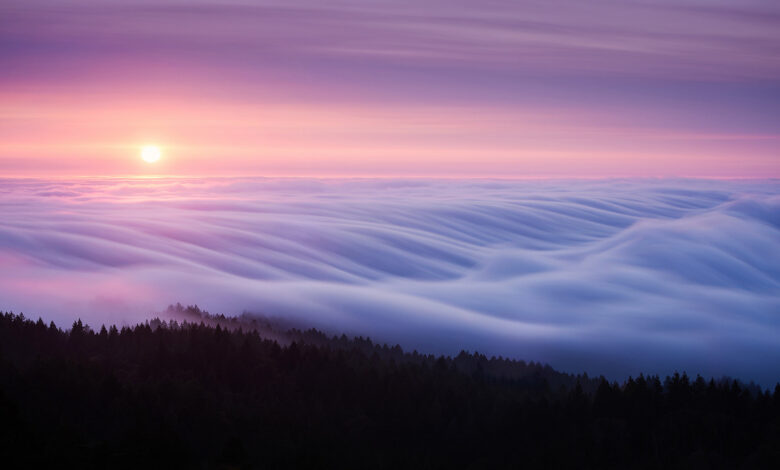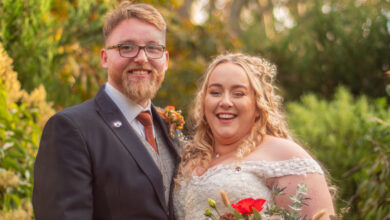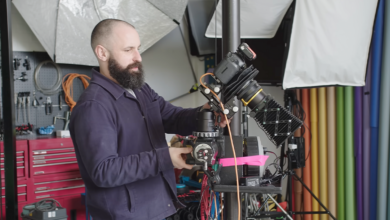7 Telephoto Lens Mistakes to Avoid for Better Landscape Photography

Using a telephoto lens is one of the most powerful tools in landscape photography. It allows you to explore perspectives beyond what classic wide-angle shots can achieve, allowing for creative and interesting compositions. However, using a telephoto lens can be quite daunting, especially if you’re just starting out. In this article, I share the top seven mistakes to avoid when using a telephoto lens, along with some technical advice and creative tips to improve your photography.
1. Not paying attention to shutter speed
Choosing the right shutter speed is crucial when using a telephoto lens for landscape photography. Telephoto lenses magnify distant objects, making even small camera shakes more noticeable than with a wide-angle lens. My (somewhat extreme) rule of thumb is to use a shutter speed that is twice the focal length of the lens. For example, if you are shooting at 400mm, a shutter speed of 1/800 second is recommended when hand-holding the camera. This ensures sharp images, but depending on your steadiness and the environmental conditions, you can go as low as 1/400 second. Don’t forget to enable in-body image stabilization (IBIS) and lens stabilization, which can allow for even slower shutter speeds.
If you are using a tripodcan take longer exposures. Just remember to turn off stabilization and use a timer or self-timer to avoid any blur when you press the shutter button. Even the slightest movement can affect the sharpness of a 400mm shot with a slow shutter speed.
2. Struggling to find your topic
A common challenge with telephoto lenses is finding your subject, especially when switching from a wide-angle perspective. It can often be difficult to figure out where to focus your attention when zooming in. To solve this problem, start by shooting landscapes without your camera. Let your eyes wander and identify elements that catch your attention. When you’re ready, use the widest focal length on your zoom lens, such as 70mm on 70-200mm lens or 100mm on one 100-400mm lens. It’s easier to scan the scene at a wider angle before gradually zooming in to fine-tune the composition.
Once you have identified your subject, slowly zoom in and see how the composition develops. Look around the edges to see what distractions you are adding or excluding from the scene. If you need to fine-tune your framing, consider using a tripod, which allows for a more intentional approach.
3. Unstable during long exposure
When taking long exposure photos with a telephoto lens, proper image stabilization is essential. sturdy tripod A lens hood is a must, and if you’re using a large lens, a lens hood will help maintain focus. Mounting a heavy lens to your camera without a hood can lead to instability, especially in windy conditions. In such cases, look for natural cover like a rock or tree to shield your setup, or lower your tripod closer to the ground. If all else fails, you can use a windbreak to block the wind.
4. Wrong focus
Focus with one telephoto lens can range from simple to complex, depending on the scene. If you’re shooting a distant subject, everything in the frame will usually be on the same plane of focus at infinity, making it easier to achieve sharpness across the entire image. The aperture setting is less important in these situations.
However, if you’re shooting a scene with multiple elements at different distances—like waves crashing at different points—you’ll want to consider using a higher aperture to increase depth of field. An aperture of f/11 or higher may be necessary, but be careful not to go above f/16, as lens diffraction can soften the image. You’ll want to experiment with your specific lens to find the optimal aperture.
As for where to focus, prioritize the subject that is most important to the viewer. For moving subjects like waves, I use autofocus with a spot meter to track the focus point, usually somewhere near the center of the frame. If the scene requires sharpness across the entire frame, consider using focus stacking—taking multiple shots at different focus points and blending them in post-processing. This technique is best used with static objects rather than anything moving.
Creatively, you can use out-of-focus areas to enhance your composition. Try using some bushes or foreground elements to help frame your subject. Also, sometimes having an out-of-focus background can help isolate your subject. It really depends on the look you’re going for.
5. Sticking to the obvious instead of being creative
It’s easy to focus on the most obvious subjects, but don’t be afraid to explore your surroundings and step outside your comfort zone. While it’s perfectly fine to zoom in on obvious subjects, some of the most compelling images come from experimenting with textures, lines, shapes, and unconventional angles. For example, when I was shooting in New York City, I initially wanted to shoot a classic cityscape at night. But by looking for interesting patterns or using unusual angles, you can transform familiar scenes into something completely different. Don’t be afraid to explore your creativity with a telephoto lens and see what interesting stories you can tell with it.
6. Zooming in without considering composition
A common mistake I made when I first picked up 70-200mm lens zoomed straight in to maximum focal length without considering how it will affect the composition. While you may have the ability to zoom in to 200mm or 400mm, sometimes this can be too close to the scene. Many of my best telephoto images are taken at the lower end of the zoom range, around 100mm or 150mm. Pay attention to the edges of your image and the space around your subject. Creating minimalism in your composition may require more space than you initially think.
One technique is to set up your desired layout and then scale it down a bit to allow for cropping space. This allows you to adjust the aspect ratio or experiment with different cropping styles in post-processing.
7. Stand still and do not change your perspective
Finally, don’t make the mistake of staying in one place with your telephoto lens. While it may be tempting to stay in one place and rely on the zoom capabilities of your lens, moving around can dramatically change your perspective and improve your composition. Just like when using a wide-angle lens, explore the scene, change your position, and see how it affects the overall image. If part of your scene is obstructed or could be improved from a different angle, don’t be afraid to move. Whether it’s walking further down the trail or driving to a different viewpoint, changing your position can create more dynamic and interesting images.
I really hope these tips are helpful to you. If you like them, you can check out website for more tutorials and workshops!




